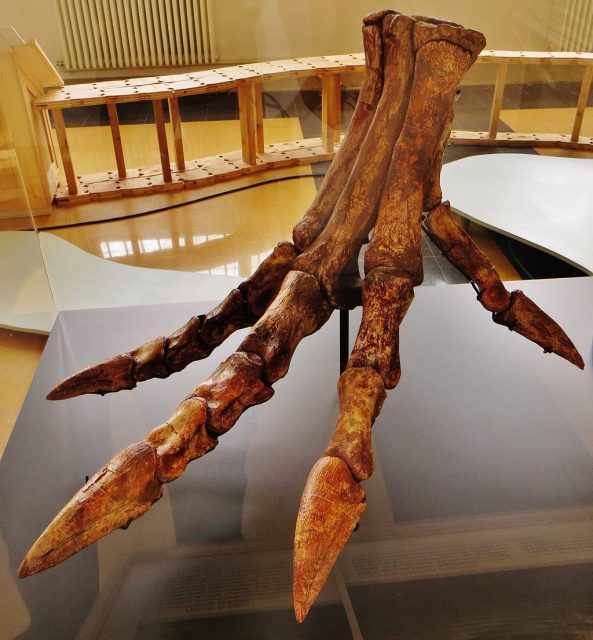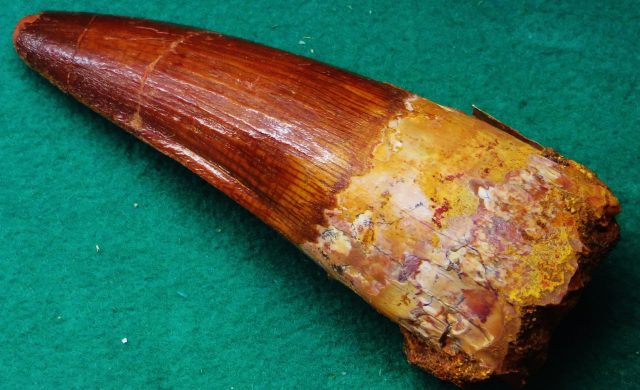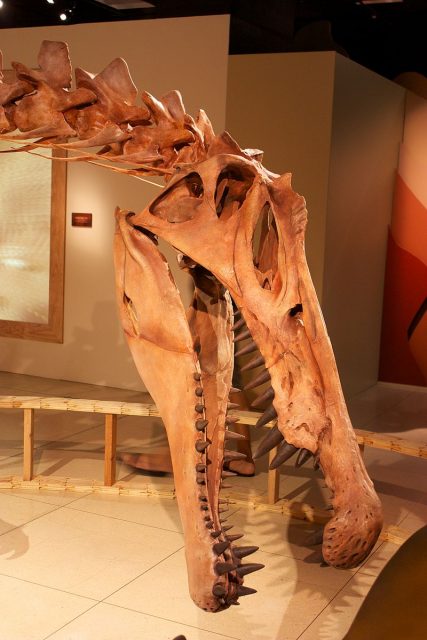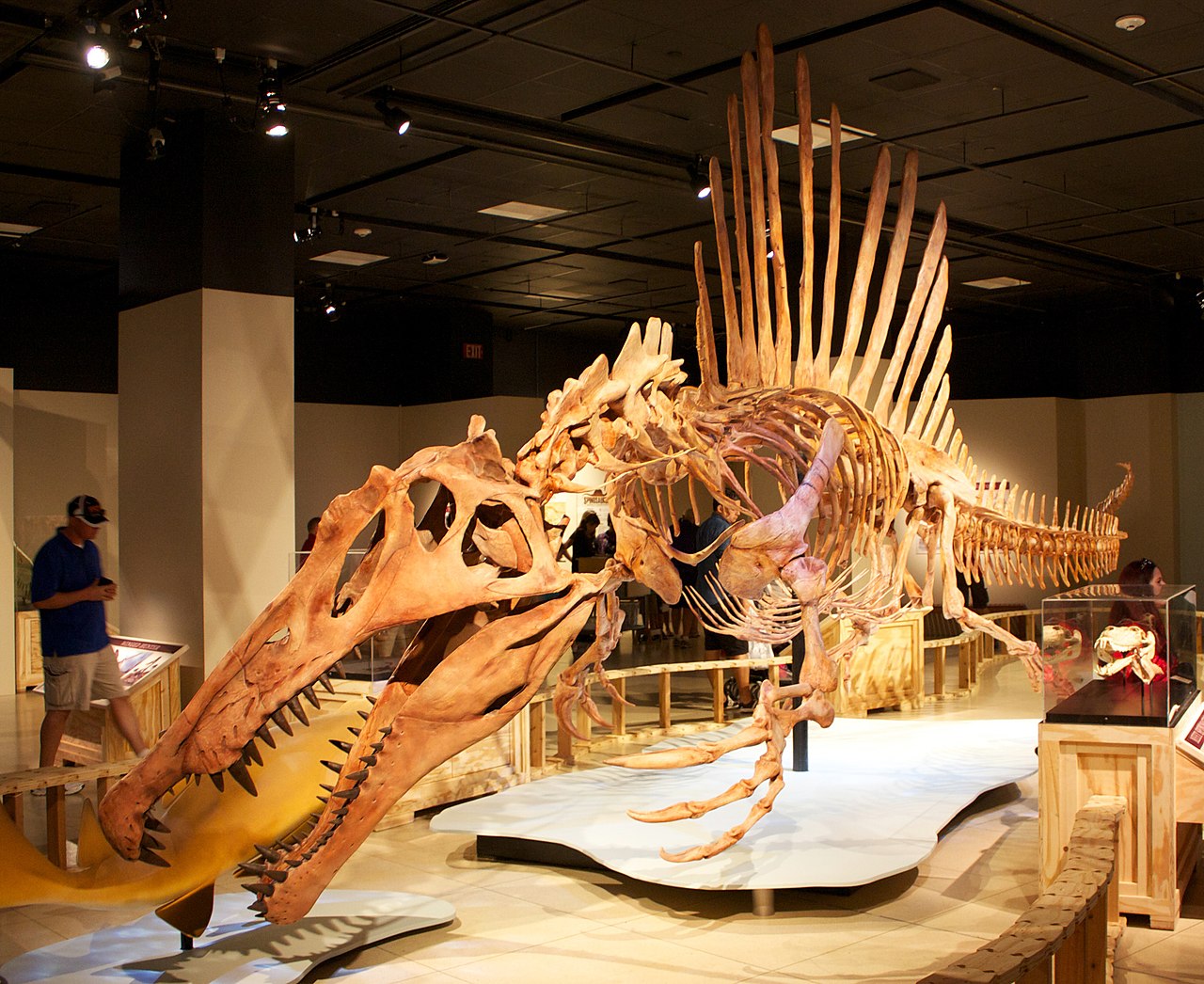A ‘Jurassic Park’ villain is getting a scene change from land to water, thanks to a toothsome discovery in the ancient river beds of Morocco.
The croc-like Spinosaurus, measuring 49 ft and weighing 4,000 kg, pursued Sam Neill and co across the infamous Isla Sorna in part 3 of the franchise. According to these latest finds, it should have been swimming rather than stomping.
Dino detectives from the University of Portsmouth obtained over 1,000 teeth found in sedimentary rocks, i.e. those formed in water. These are part of the Kem Kem beds, specifically an area in southeast Morocco which includes a village called Tarda.

Approx 100 million years ago, during the Cretaceous period when predators like ‘Spinosaurus aegyptiacus’ were at large, a raging river system ran through the Sahara. It took many things with it to be distributed in the rock. Including teeth!
The Plymouth team analyzed chompers scattered along 2 sites. “In one bone bed,” National Geographic writes, “teeth from Spinosaurus outnumber those of other dinosaurs by roughly 150 to one.” For many this provides proof the menacing creature was a dedicated “river-monster” and ruler of the watery roost. A fearsome opponent, yet one liable to lose some teeth in pursuit of prey!

Findings have been published in the journal Cretaceous Research. Quoted by Science Daily, Plymouth’s Prof David Martill states: “We know of no other location where such a mass of dinosaur teeth have been found in bone-bearing rock.”
Paleontology student Aaron Quigley, who works with Prof Martill says Spinosaurus teeth stand out from the pack, with “a smooth round cross section” that reflects the light.
Also part of the group is paleontologist Dr Nizar Ibrahim. He’s a National Geographic Explorer who earlier this year uncovered a fossilized Spinosaurus tail. Writing alongside Prof Martill and others in the journal Nature, he outlined how the appendage had “an unexpected and unique shape” which “forms a large, flexible fin-like organ”.

How can one very dead tail be made to live again? The solution could come straight from the ‘Jurassic Park’ FX workshop. A robotic version was created for testing. The team saw it provided “greater thrust and efficiency in water than the tail shapes of terrestrial dinosaurs”.
Dinosaurs are frequently compared to birds. Might the Spinosaurus have been like a heron, wading into the wet stuff to grab a bite before going back to dry land? Back in 2014, Ibrahim located a “surprisingly complete” Spinosaurus skeleton, according to National Geographic. From this it was concluded the movie monster’s limbs were too short for this kind of activity, giving further credence to the idea of it as a ‘Jaws’-like predator.
As the biggest carnivorous dinosaur on record, Spinosaurus was the perfect choice to take attention away from the T-Rex in ‘Jurassic Park III’. The Natural History Museum website describes it, somewhat flatteringly, as “the longest meat eater, although more slender than T. rex or Giganotosaurus.”
Big screen excitement aside, the true story of the Spinosaurus is dramatic enough on its own. It was first discovered in Egypt by German Ernst Stromer in 1915.
The find made his name. He in turn named the creature. Spinosaurus aegyptiacus translates as “Egyptian spine lizard”. Its remains were sent to a museum in Munich. World War II broke out and evidence was obliterated in the conflict.
Only in recent years have remnants of this rampaging river monster been available to study. The conception of dinosaurs as land dwellers has also been challenged, with the latest Spinosaurus news adding to a more diverse picture.
With images of the beast having to be revised in light of fresh discoveries, no wonder the ‘Jurassic Park’ series is introducing its own creations! Future instalments may see the cast getting their feet wet while confronting new Archosaur adversaries…
Another Article From Us: Five Thousand Year Old Penguins Emerge From the Melting Antarctica Ice
Steve is a writer and comedian from the UK. He’s a contributor to both The Vintage News and The Hollywood News and has created content for many other websites. His short fiction has been published by Obverse Books.
